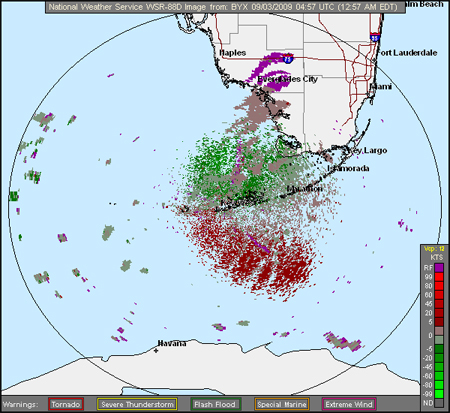
Doppler Radar
Taken from the NOAA Public Image Library
For most birders a pair of binoculars or a scope can be the best way to spot birds, if not just the naked eye. But there's another very interesting way to see them from a different perspective: radar.
Most migratory birds do their travelling at night. Calmer atmospheric conditions, lack of bird-eating avian predators, and cooler temperatures are among the proposed reasons for this behavior. Except for the occasional few birds that you can observe passing in front of the moon, it is impossible to actually see the massive numbers of birds that flood our skies in the spring and fall as they migrate to and from the Boreal. But radar imaging can help capture these birds' activity long after the sun sets.
Birds typically begin migrating about a half hour after sunset, peaking at about 2 hours after sunset. The effect on radar images is a sudden explosion of activity surrounding the radar site during those times. As the night goes on and morning approaches, the birds look for a good landing spot and the activity on the radar simmers down considerably.
A few nights ago there was a great display of this on the East Coast, where clear skies allowed for undisturbed shots of an enormous outpouring of birds. Here's a shot from around 9-10 pm Eastern Time - you can see that the highest activity is in the East, matching the notion that the peak is a few hours after sunset:
Woodcreeper is a great blog that has been tracking night migration frequently on the East Coast. Here's an interesting one posted by Woodcreeper - it was taken one night after the image above and is of birds migrating south out of Florida into the Caribbean. If you click on it, it will show you a loop of the night's events. I thought this one was particularly fun to watch as you can see clouds moving adjacent to the birds' southern movement, easily showing what are birds and what are not:



